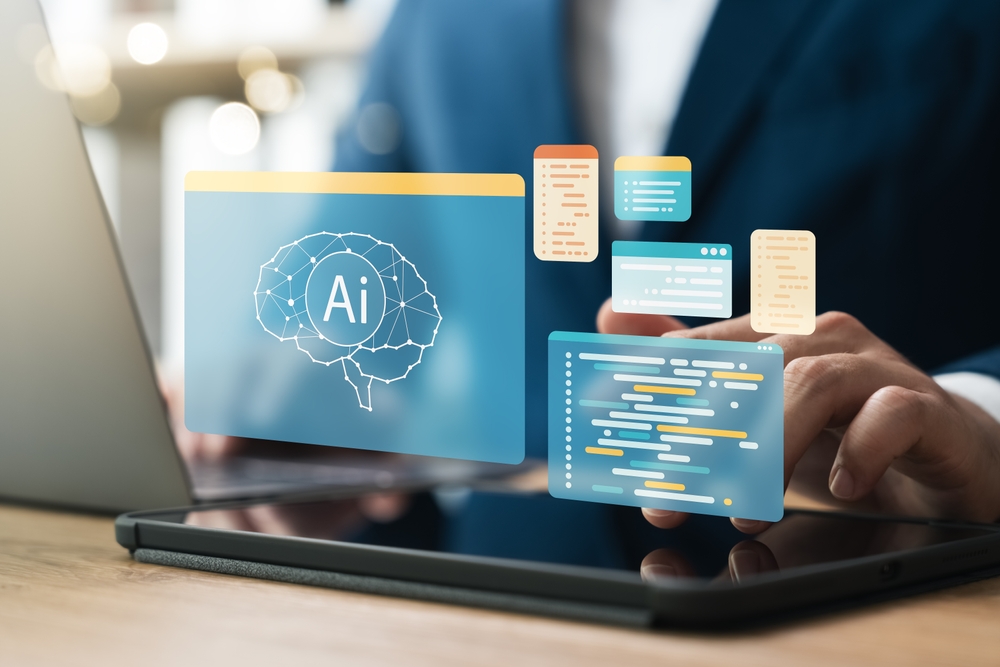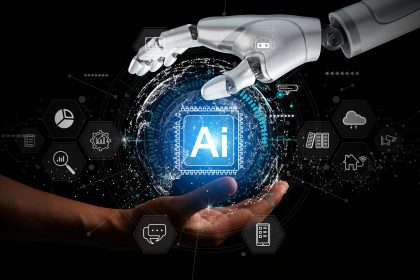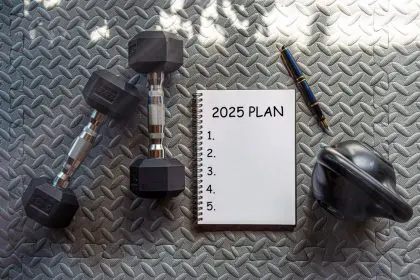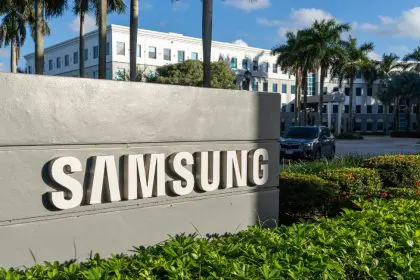The industrial automation market is exploding with the kind of growth that makes tech bubbles look like minor market corrections. What started as simple assembly line robots has evolved into an artificial intelligence-powered transformation that’s set to more than double in size over the next decade, reaching nearly half a trillion dollars by 2035.
This isn’t just about replacing human workers with machines anymore. It’s about creating entirely new categories of intelligent systems that can think, adapt, and optimize themselves in ways that make today’s automation look primitive. The 9.1% compound annual growth rate represents more than just market expansion—it signals a fundamental shift in how everything gets made, from cars to smartphones to the food you eat.
The companies driving this transformation are betting that human labor shortages, rising costs, and the demand for impossible precision will force every industry to embrace automation or become obsolete. The question isn’t whether this revolution will happen, but how quickly it will reshape the global economy and what happens to the millions of workers whose jobs are about to be automated away.
Artificial intelligence is making robots terrifyingly smart
The integration of AI and machine learning into industrial systems has created automation that doesn’t just follow programmed instructions but actually learns from experience and adapts to changing conditions. These smart systems can predict equipment failures before they happen, optimize production schedules in real-time, and even teach themselves new tasks without human programming.
Machine learning algorithms are analyzing vast amounts of production data to identify patterns and inefficiencies that human managers would never notice. These systems can adjust manufacturing processes on the fly, reducing waste, improving quality, and increasing output without any human intervention or oversight.
Predictive maintenance powered by AI is eliminating the costly downtime that has plagued manufacturing for decades. Instead of waiting for machines to break down or following rigid maintenance schedules, smart systems can predict exactly when components will fail and schedule maintenance at optimal times.
The speed at which these AI systems can process information and make decisions far exceeds human capabilities, enabling manufacturing processes to operate at speeds and precision levels that were previously impossible. This creates competitive advantages so significant that companies without AI integration may find themselves unable to compete.
Computer vision systems powered by deep learning can now perform quality inspections with accuracy rates that exceed human capabilities while working at speeds that would be impossible for human inspectors. This combination of speed and precision is revolutionizing quality control across industries.
Labor shortages are forcing the automation revolution
The tightening labor market in industrialized nations has created a perfect storm where companies can’t find enough workers and can’t afford to pay the wages that would attract them. Automation has become less about cost savings and more about survival in industries where human labor is simply unavailable.
Rising wage pressures in manufacturing jobs are making automation investments pay for themselves faster than ever before. When labor costs are increasing at 5-10% annually, automation systems that can work 24/7 without benefits, vacation time, or sick days become financially irresistible.
The demographic trends in developed countries show aging populations and declining birth rates that guarantee continued labor shortages in manufacturing sectors. This demographic reality makes automation not just economically attractive but strategically necessary for maintaining industrial capacity.
Younger workers are increasingly unwilling to take traditional manufacturing jobs, preferring service sector employment or remote work opportunities. This cultural shift toward automation isn’t just about economics—it’s about matching technological capabilities with changing workforce preferences.
The COVID-19 pandemic accelerated automation adoption as companies realized how vulnerable their operations were to human workforce disruptions. The automation investments made during the pandemic are now proving their value during normal operations, creating momentum for continued expansion.
Precision manufacturing demands inhuman accuracy
Modern manufacturing requirements have reached levels of precision that human workers simply cannot achieve consistently. Automotive electronics, aerospace components, and medical devices require tolerances measured in micrometers and defect rates measured in parts per million.
The pharmaceutical and food industries face regulatory requirements that demand perfect traceability and consistency that only automated systems can reliably provide. Human error in these industries can result in product recalls, regulatory fines, and safety issues that make automation investments essential rather than optional.
High-volume production environments require speeds and consistency that exceed human physical capabilities. Automated systems can perform repetitive tasks thousands of times per day without fatigue, variation, or quality degradation that inevitably occurs with human workers.
The complexity of modern products requires assembly processes that involve hundreds of precise steps, each of which must be performed perfectly to avoid defects. Automated systems can coordinate these complex processes with timing and accuracy that would be impossible for human teams to achieve.
Quality control requirements in industries like electronics and automotive now demand 100% inspection rates at speeds that require automated vision systems and measurement tools. Human inspectors simply cannot match the speed and consistency required for modern quality standards.
The Industrial Internet of Things is creating smart factories
Factory floors are becoming digital ecosystems where every machine, sensor, and process is connected and communicating in real-time. This connectivity creates opportunities for optimization and control that were impossible with isolated systems and manual monitoring.
Real-time data analytics from connected systems enable dynamic adjustments to production processes based on supply chain conditions, demand fluctuations, and equipment performance. This responsiveness allows manufacturers to optimize efficiency and reduce waste in ways that static production systems cannot achieve.
Cloud-based control systems allow manufacturers to monitor and control operations remotely while leveraging computational power that would be impossible to maintain locally. This cloud integration also enables rapid deployment of new capabilities and updates without major hardware investments.
Digital twins—virtual replicas of physical manufacturing systems—allow companies to test changes, optimize processes, and predict outcomes without disrupting actual production. This technology enables continuous improvement and innovation without the risks associated with experimenting on live production systems.
Predictive analytics powered by IoT data can forecast demand, optimize inventory levels, and coordinate supply chain activities with precision that reduces costs and improves customer satisfaction. These capabilities transform manufacturing from reactive to proactive operations.
Regional competition is driving massive investments
North America’s early adoption advantage in industrial robotics and AI is creating pressure on other regions to accelerate their automation investments or risk falling behind in global manufacturing competitiveness. This regional competition is driving government policies and private investments that fuel market growth.
Asia-Pacific’s government-supported push toward Industry 4.0 and smart manufacturing is creating the fastest-growing automation market in the world. Countries like China, Japan, and South Korea are making massive public and private investments in automation technology and infrastructure.
European focus on sustainability and energy efficiency in automation is creating demand for specialized systems that can reduce environmental impact while improving productivity. This environmental focus is driving innovation in automation technologies that serve multiple objectives simultaneously.
The regional competition for manufacturing leadership is creating a global race to deploy the most advanced automation technologies. Countries and regions that fall behind in this race risk losing manufacturing competitiveness and economic growth opportunities.
Trade policies and tariffs are also influencing automation adoption as companies seek to reduce dependence on international supply chains by automating domestic production. This reshoring trend is driving additional demand for automation technologies in developed countries.
The transformation goes beyond replacing human workers
The future of industrial automation involves collaborative robots that work alongside humans rather than replacing them entirely. These cobots are designed to handle dangerous, repetitive, or precision tasks while allowing human workers to focus on creative, problem-solving, and supervisory roles.
Augmented reality interfaces are enabling new forms of human-machine collaboration where workers can interact with automated systems through visual overlays and gesture controls. This technology bridges the gap between human intuition and machine precision.
Autonomous mobile robots are transforming warehouse and factory logistics by handling material movement and inventory management without human intervention. These systems can navigate complex environments and adapt to changing layouts and requirements.
Digital twins and simulation technologies are enabling manufacturers to test and optimize processes in virtual environments before implementing changes in physical systems. This capability accelerates innovation while reducing the risks and costs associated with process improvements.
The integration of artificial intelligence throughout manufacturing systems is creating autonomous factories that can operate with minimal human oversight while continuously optimizing their own performance. This level of automation represents a fundamental shift from human-controlled to machine-controlled manufacturing.
The industrial automation revolution represents more than just technological advancement—it’s a complete reimagining of how things get made and who makes them. Companies that embrace this transformation will gain competitive advantages that may be impossible to overcome, while those that resist may find themselves unable to compete in an increasingly automated world.
The $443 billion market projection reflects not just the value of automation equipment but the economic transformation that occurs when entire industries shift from human-dependent to machine-optimized operations. This transformation will reshape labor markets, supply chains, and global economic relationships in ways that are only beginning to be understood.


















